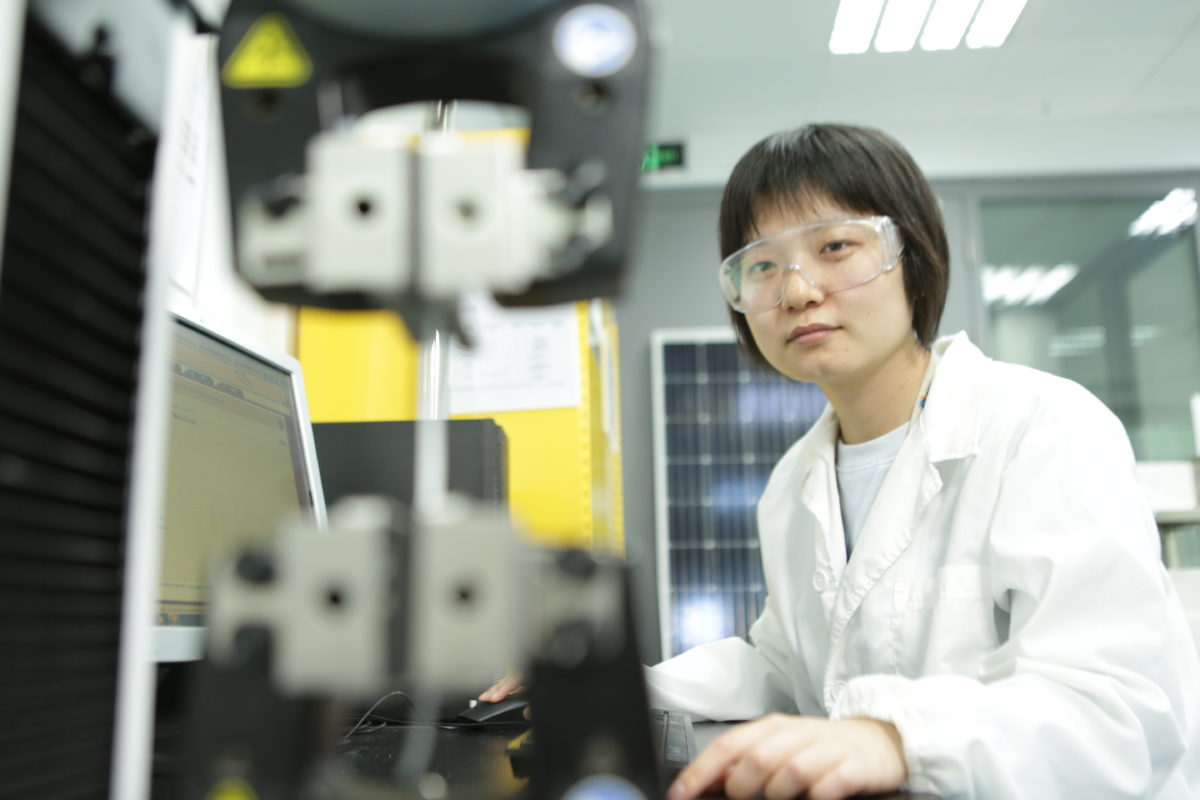In a nutshell, the concept of a circular economy is an alternative to a linear economy built on the principles of “Take-Make-Dispose”, and argues for keeping resources in use for as long as possible, extracting the maximum value from them whilst in use, and then recovering and regenerating them at the end of each service life. The concept of waste does not exist.
In the second in a series of interviews, which will be published over the coming weeks, Imco Goudswaard, sustainability manager for DSM Advanced Solar tells pv magazine, “The circular economy is an important topic.” To this end, across all its businesses DSM has been investing over the past years in finding ways to produce products that fit these principles and enabled “closed-loop” solutions through advocacy & partnerships. Particularly when it comes to the backsheet and solar industry, however, this is no easy task.
pv magazine: Why does DSM care about the circular economy?

Market Insights & Sustainability Lead
DSM Advanced Solar
Image: DSM Advanced Solar
Imco Goudswaard: We believe that companies have a responsibility to address environmental and social challenges, which includes sustainable use of the limited resources on earth. When we tried to leverage the environmental values of the backsheet technology we launched around two years ago – like its low carbon footprint and recyclability – we noticed that the relevance of these topics is very limited in the industry. That was why we started looking into how we could create more awareness of such issues as circularity and end of life treatment.
How have these issues been met by other stakeholders?
We do see that interest for these topics is growing in the industry. There are some company stakeholders which are really concerned about the issues. However, we also see that only a few companies are really putting effort, research and resources into them. Just a few are willing to do that.
A big part of the circular economy is the elimination of waste. What is DSM doing in this area?
When you produce backsheets, there is a couple of percentages of waste – the edge trim – where the sides of the films are cut off. You can recycle or reuse this. In our production, it goes to packaging suppliers to make boxes, or other companies which make chairs.
The traditional backsheets cannot be molten and reshaped, because they are laminated with an adhesive, which is crosslinked and sometimes use polymers like polyvinylfluoride, which are hard to process in the melt. So, the production waste of these backsheets ends up in landfills or incineration plants.
Furthermore, at the moment, the recycling process for PV modules at the end of their life is such that the recyclability of our backsheets cannot be leveraged. They crush the whole module, so you get a mixture of glass, polymersand cells. They then separate out the glass and some metals, with the remaining impure materials being sent to landfills or to waste-to-energy incineration plants, where they try to recover the energy.
Although not the perfect solution, as our backsheet is fluor-free, it can still save considerable cost in this incineration process, as no corrosive HF gasses are produced.
Is anything being done to change this?
That is still more on the scientific/experimental level. Veolia started off a dedicated PV module recycling facilityaround a year ago in France, but it is still following the method of just crushing and mixing the module materials and subsequently separating the components out as much as possible.
I also know of European research projects under FP7 and Horizon 2020, where they have developed thermal and chemical recycling processes to separate the pure materials as much as possible. Furthermore, NPC from Japan offers a heated blade cutter, which can separate the glass without crushing from the rest of the material stack. So, there are some initiatives that are going in that direction, but it is far away from a commercial level, which is also partly due to the fact the waste streams are too small at this moment to make recycling processes economic viable.
But we need to prepare for the higher waste streams that are coming. According to forecasting models of IEA-PVPS, you clearly see that after 2030 the PV waste volumes will grow fast and then we need to be prepared by having high value recycling technology available.
We also advocate that you can improve recyclability via the design of the modules. So it is not only a matter of the recycling process itself, it is also the selection you make in terms of the choice of materials and how you design the module. Those two need to be aligned and work together, and there is still very little activity in that area.
Is there anyone working on that?
I know of the company Apollon Solar in France who developed the N.I.C.E. module. This module is based on a double edge sealed glass-glass concept without using an encapsulant. Because of the elimination of the encapsulant it is much easier to recover pure and valuable components. You could say that’s a typical design to allow for easy disassembly. Of course, the concept also needs to fulfill all other criteria to be commercially viable.
Many modern proponents of the circular economy, base their visions on cradle to cradle (C2C) principles. What are your thoughts on this?
There are a lot of initiatives in the polymer industry in terms of C2C and using regenerative material sources. These kinds of solutions are available and there is already quite a lot of activity in the industry. As a consumer of polymers, I think we should look carefully and see if this applicable for the solar industry as well.
Overall, the primary objective for the industry is to drive the energy transition away from fossil fuels to renewables. However, we have a responsibility too to secure that this transition is sustainable on the long term too. Therefor end-of-life and circularity must become an integral part of our challenge. In order to succeed this requires discussions and alignment between the stakeholders in the industry, and also of course the policymakers.
This content is protected by copyright and may not be reused. If you want to cooperate with us and would like to reuse some of our content, please contact: editors@pv-magazine.com.




1 comment
By submitting this form you agree to pv magazine using your data for the purposes of publishing your comment.
Your personal data will only be disclosed or otherwise transmitted to third parties for the purposes of spam filtering or if this is necessary for technical maintenance of the website. Any other transfer to third parties will not take place unless this is justified on the basis of applicable data protection regulations or if pv magazine is legally obliged to do so.
You may revoke this consent at any time with effect for the future, in which case your personal data will be deleted immediately. Otherwise, your data will be deleted if pv magazine has processed your request or the purpose of data storage is fulfilled.
Further information on data privacy can be found in our Data Protection Policy.